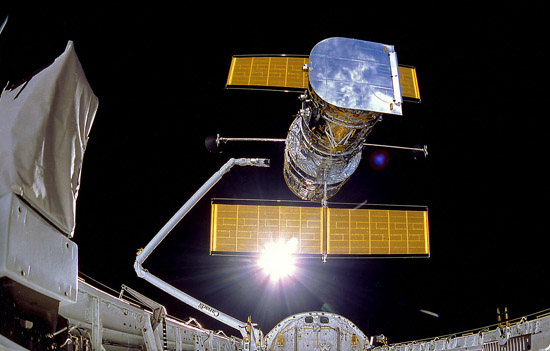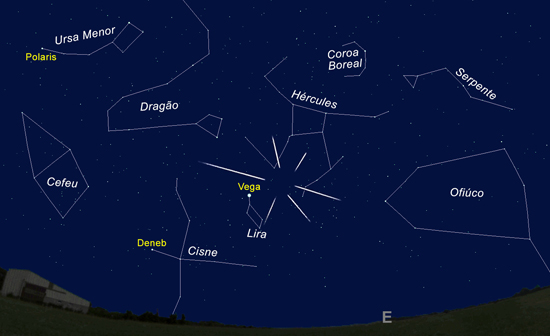
April is the month when the main astronomical events are the Lirids “star shower”, which will be clearly visible, and the quarter-century of the Hubble Space Telescope.
During the month of April, the planet Saturn will vary greatly. On the 1st, it only rises around 1:00 in the morning, but at the end of the month, it appears above the horizon at 22:30 in the east.
As for Jupiter, its approach to the planet Venus has already begun, an encounter that is scheduled for the last day of June. During the month of April, the two planets will approach more than 30 degrees.
Day 4 will be the time of the Full Moon and also the total eclipse of the Moon. Unfortunately, as it will occur between 10:00 and 16:00, it will not be observable in Europe.
With a movement of about 12 degrees a day (approximately one hand) in the sky, our satellite will pass just 4 degrees from Saturn on the 8th, reach the waning quarter on the 12th, and the New Moon on the 18th.
On the 21st, the two brightest objects in the night sky, the Moon and the planet Venus, will be 7 degrees apart.

The next day brings a challenge, aimed only at the most persistent and observant. By nightfall, the planets Mercury and Mars will be about 1 degree apart. Unfortunately, with Mars moving farther and farther away from Earth (it reaches its apogee in July), the red planet will be dim, and should not be visible until 21 pm, by which time the two planets will be just 00 degrees above the horizon. .
Easier to observe will be the maximum of the "Star Rain" of the Lirids, which occurs on the night of 22 to 23. The name is due to the fact that the radiant (point from where the meteors seem to emanate) of this "rain" is in the constellation of the Lira.
This year will be conducive to observing the Lirids, as the Moon will not illuminate the sky too much, and will set around midnight. As for the number of meteors per hour, although only 18 are forecast (in dark skies), this rain has already given rise to some unexpected outbreaks, which reached 90 meteors per hour.
And the 23rd will be a celebration. On that day, museums and science centers across Europe will host events commemorating the 25th anniversary of the Hubble Space Telescope.
All of them will have in common the revelation of an unprecedented image by Hubble, measuring about 3 meters, which will take place in Portugal at Planetário do Porto and at Planetário Calouste Gulbenkian. Both events are co-organized by the Institute of Astrophysics and Space Science (IA).
Towards the end of the month, on the 26th, the crescent Moon passes to about 6 degrees of Jupiter.
Good observations.
Author Ricardo Cardoso Reis (Porto Planetarium and IA)
Science in the Regional Press – Ciência Viva

















Comments